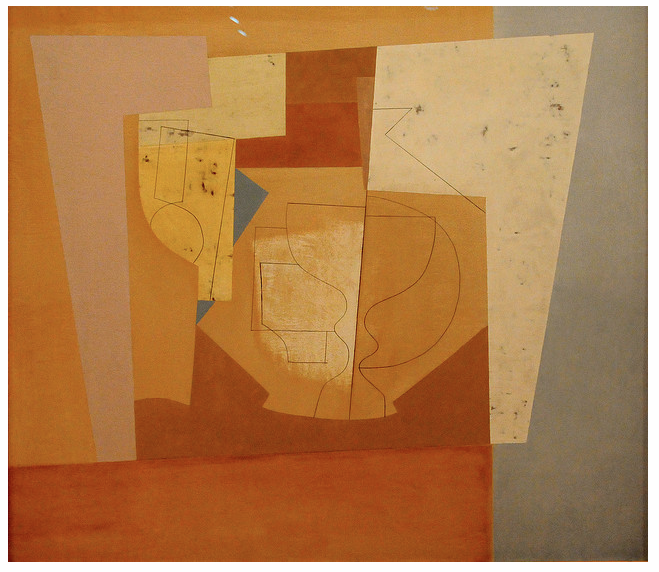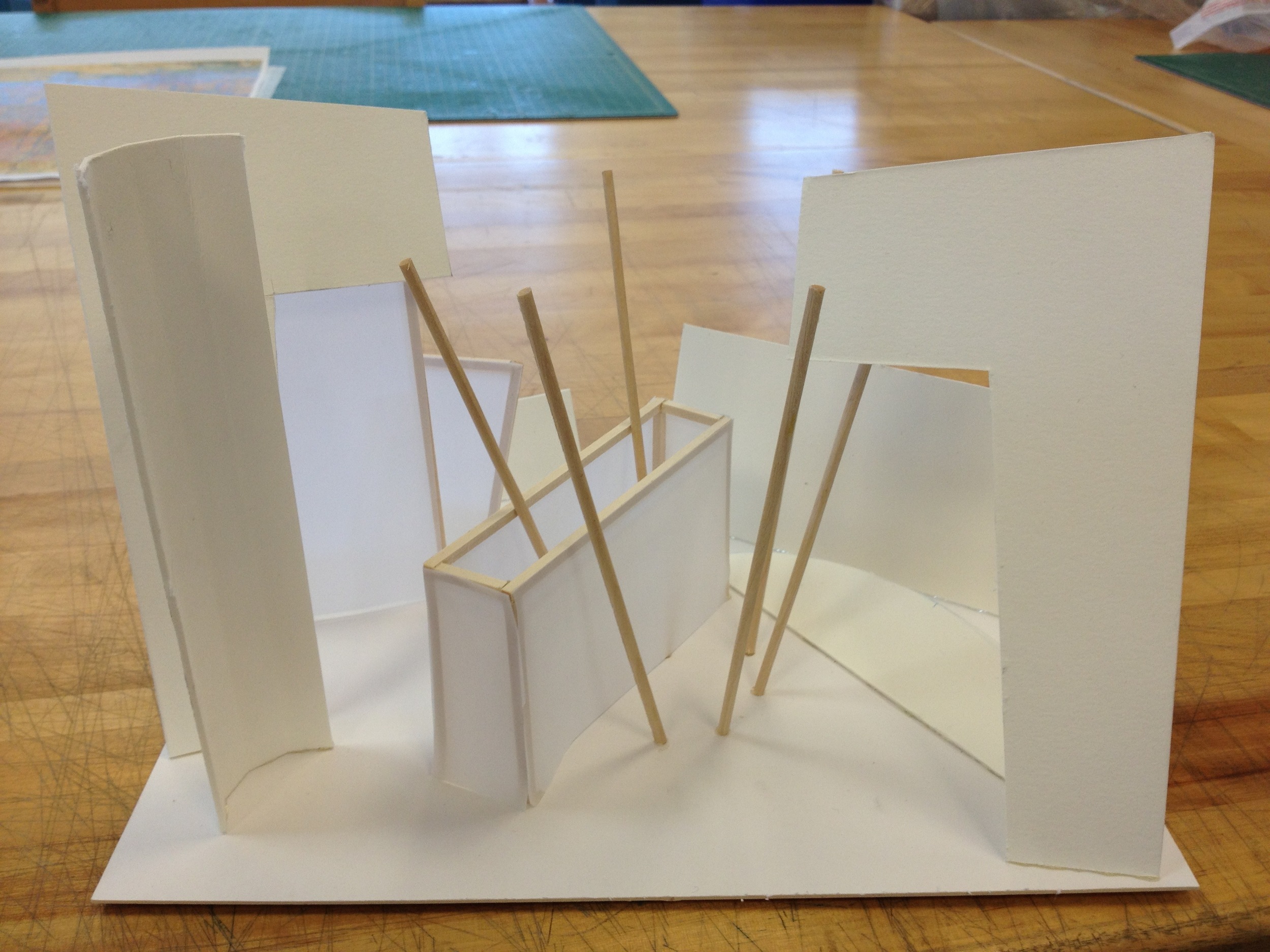Two 2D Inspirations For A Model
After the trip to New York City two inspirations for an abstract model were chosen.
The first is a sketch interpretation created while watching Oskar Fischinger's artist film "Raumlichtkunst"
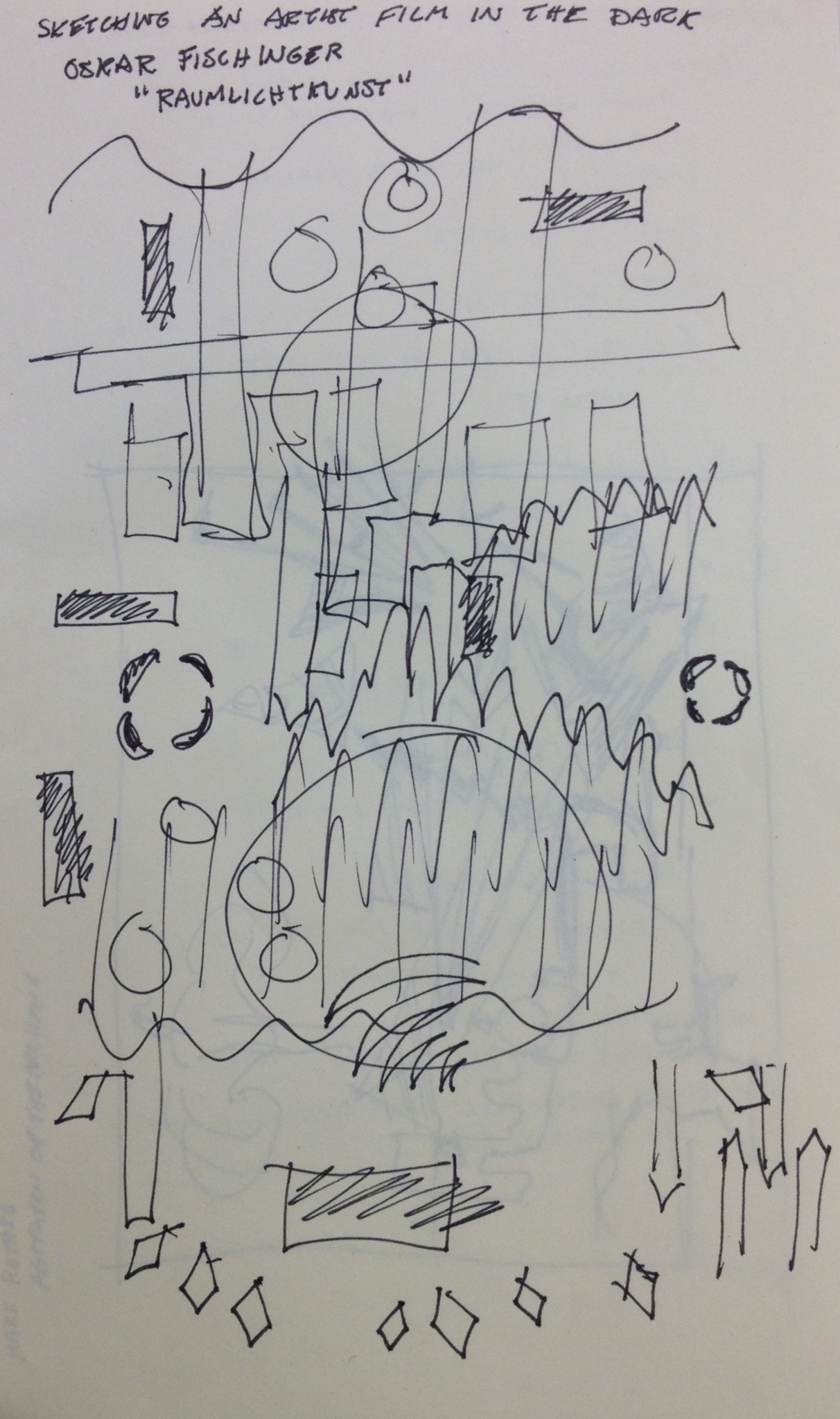
The second is a Mark Rothko painting titled "Agitation Of The Archaic"
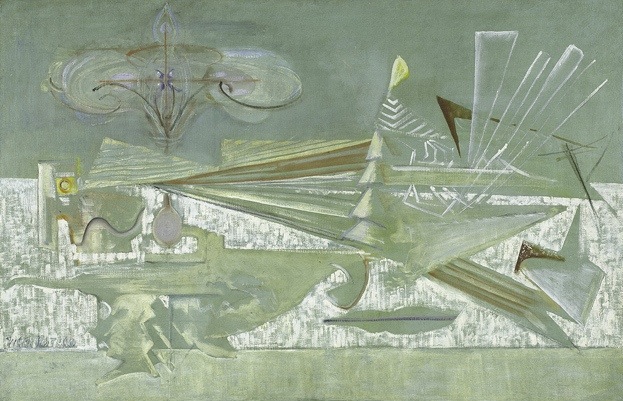
Both of these sources were drawn upon for the model.
The model's concept is layering, ambiguity and movement.
After a discussion on a previous model's rendition, it was decided that the armature was too strong of an element and needed to be broken up or reduced to better visualize the concept of ambiguity because it was clearly defining itself as a wall or reference plane. In this new iteration the first task was to pull the armature apart. Pieces were then strategically placed to overlap in various views and be seen in dialogue with one another, helping to define their placement in space. The main planes that dictate the three sections are derived from Rothko's painting where he seems to have painted three clear horizontal planes.
The pieces that are reminiscent of white picket fences were placed based on shapes discovered in Fischinger's artist film. This creates a narration that speaks of how once the American dream was to have a family and a house with a white picket fence. Rothko's painting "Agitation of the Archaic" contains objects resembling a genie lamp, old battle flags etc., all things long gone in the past. The interpretation of Rothko's painting in conjunction with the shapes from Fischinger's film suggest a new narrative on things that have now become part of the past. The white picket fences and their movement within the model suggest a interpretation that the American dream has changed and the old notion has been left behind.
The composition of the model is physically oscillating, on its hinges, as well as visually. It creates psychological experienced space where the viewer is constantly reassessing the abstract space. The user strives to see and understand the piece all at once as well as separately.
This model begins to raise the question whether architecture is part of the mind and not part of the body. It will be the precursor to the research into a building that can collapse and pull apart physically, visually or both.
Watercolor to Model Interpretation
The next iteration from an abstract 2D painting to an abstract 3D model. The painting:
The model:
The model was designed and built on the concept of ambiguity. Each piece appears either as in the foreground or background depending on how the model is oriented. The main armature was conceived from the rectangular prism located at the center of the painting.
Model to Watercolor Interpretation
After a discussion during class it was found that the model (below), like the original Ben Nicholson Painting, was about objects being ambiguous about their placement in space. Ambiguity in this sense means it can be viewed equally in two ways. The Model:
Study Sketches:
Watercolor Interpretation:
Related articles
- Ben Nicholson April 1957 3D Interpretation (jeffsargis.wordpress.com)
Ben Nicholson April 1957 3D Interpretation
For our first studio assignment we reinterpreted the 3D space being depicted in a 2D piece of art. Ben Nicholson April 1957
Photo By Renzo Dionigi
Photo URL: http://www.flickr.com/photos/renzodionigi/3438501776/in/photostream/
His website: http://www.renzodionigiphoto.com/
Model interpretation
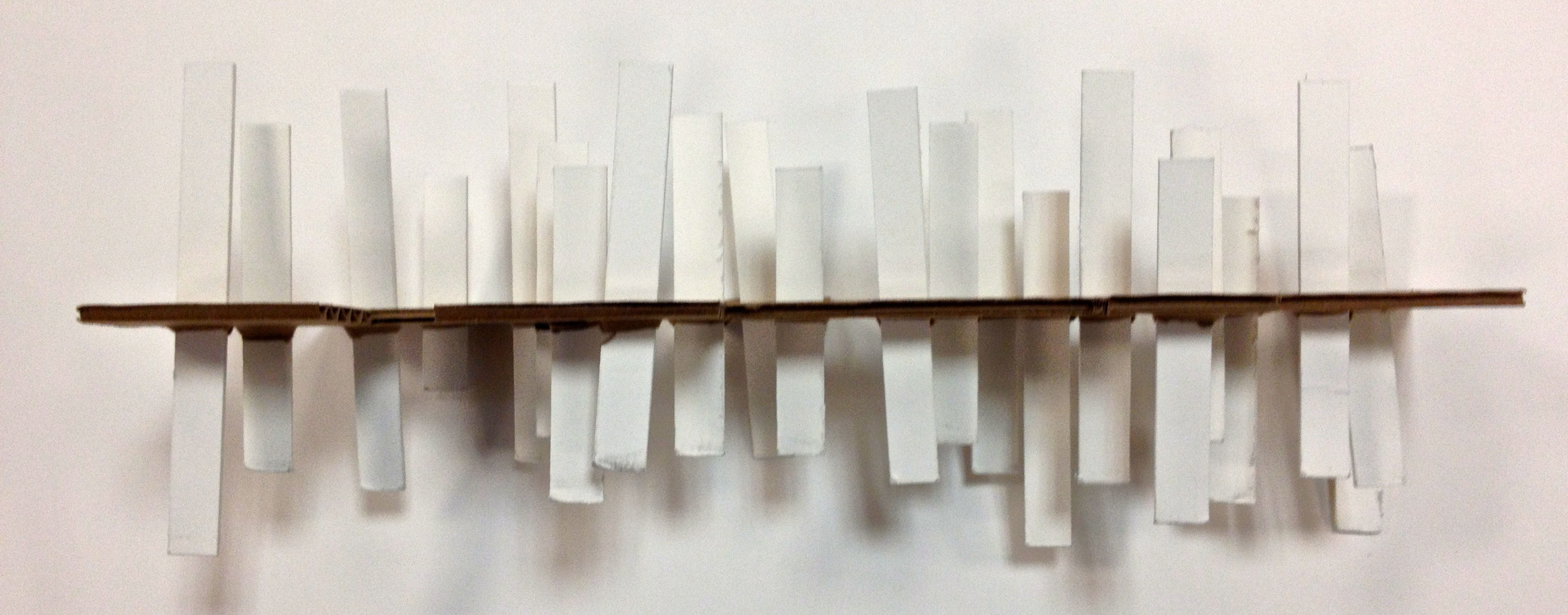
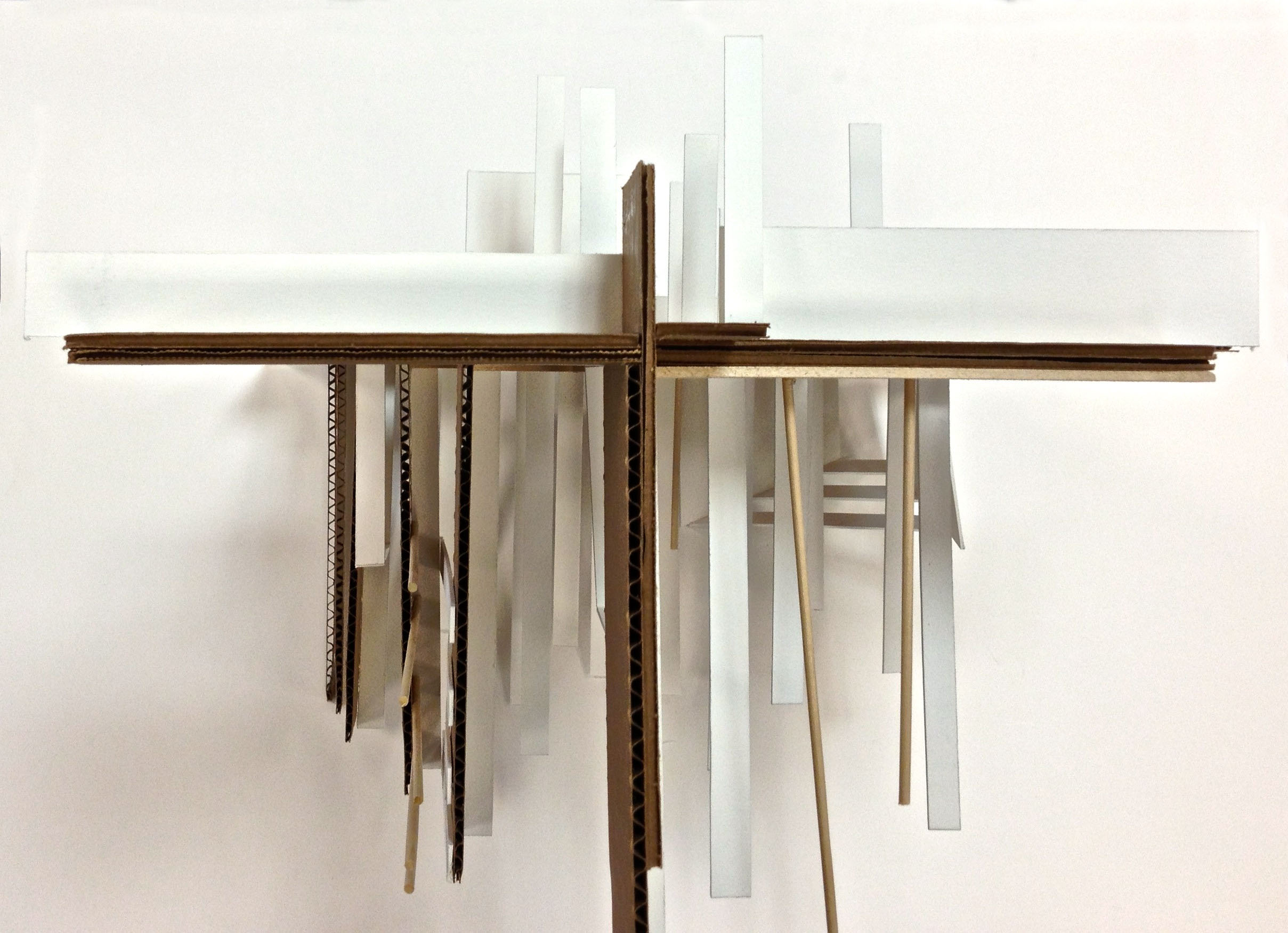
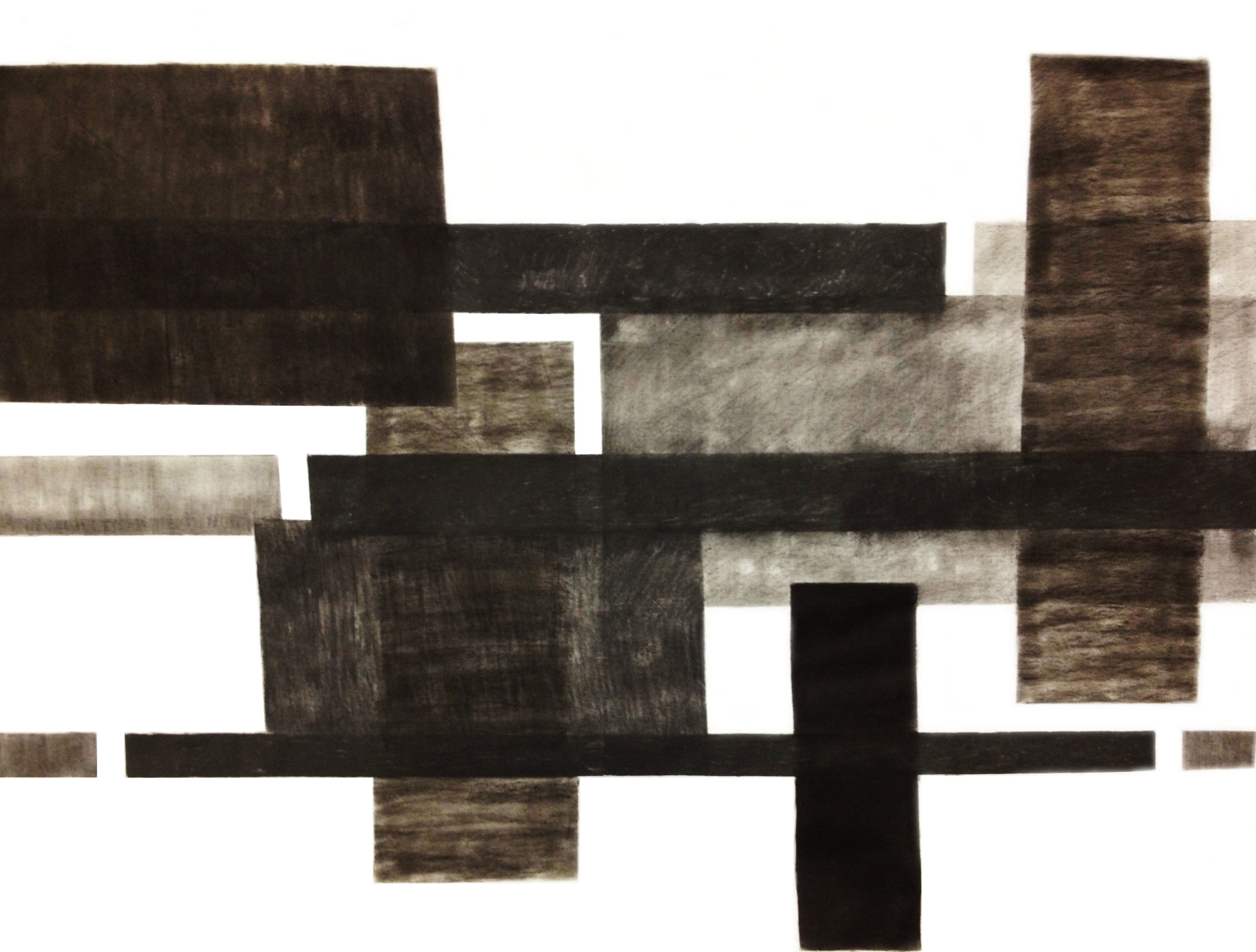
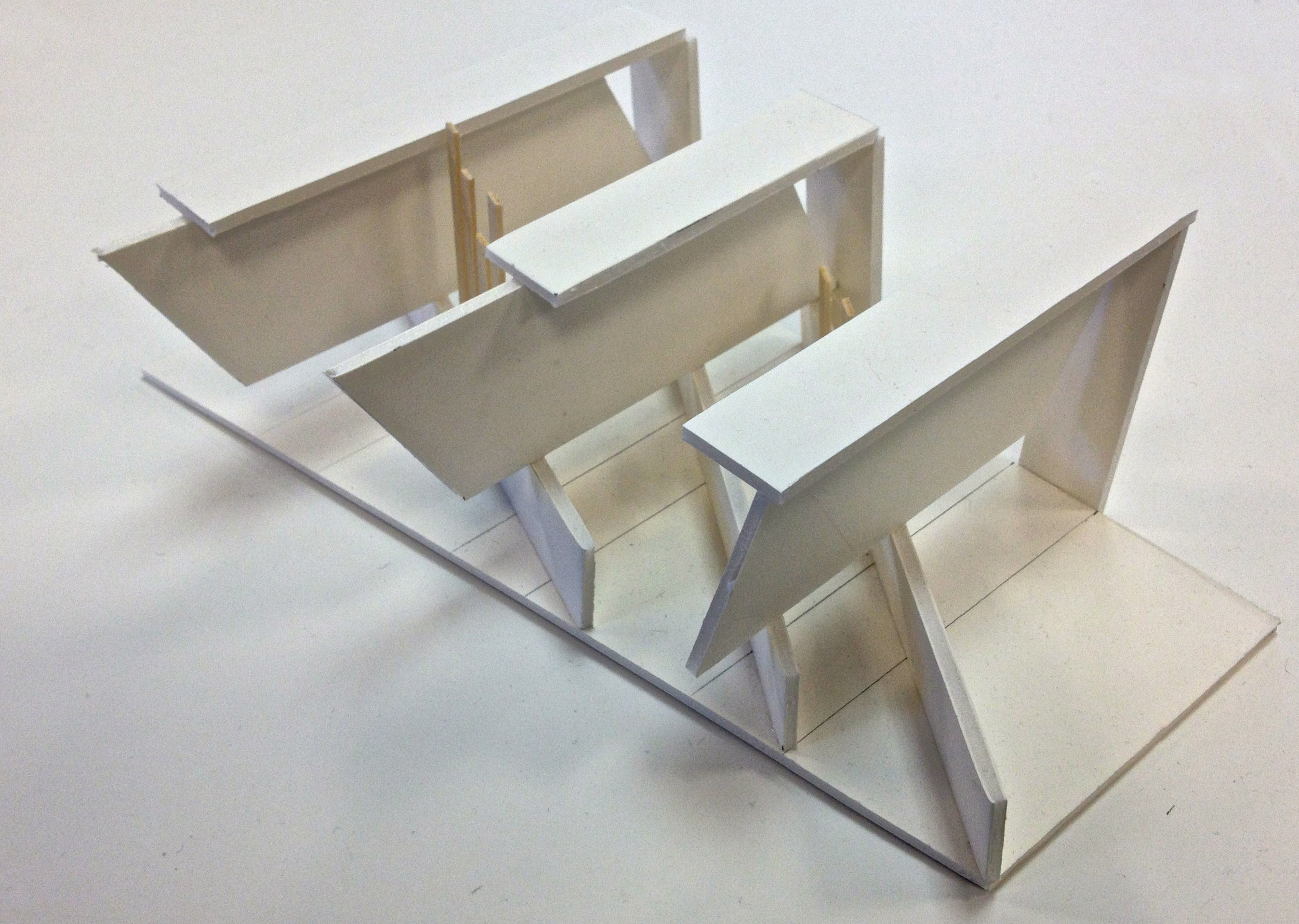
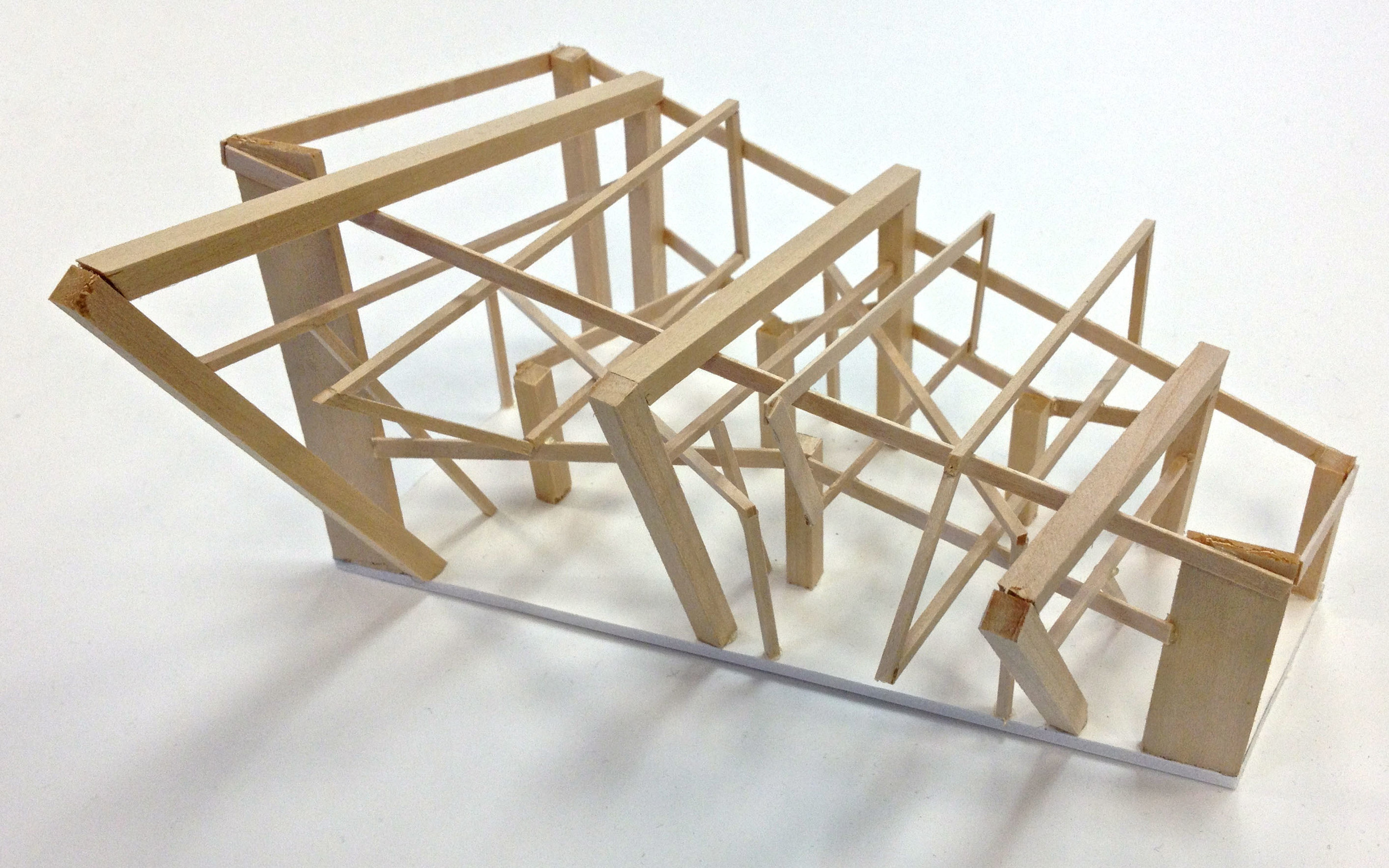

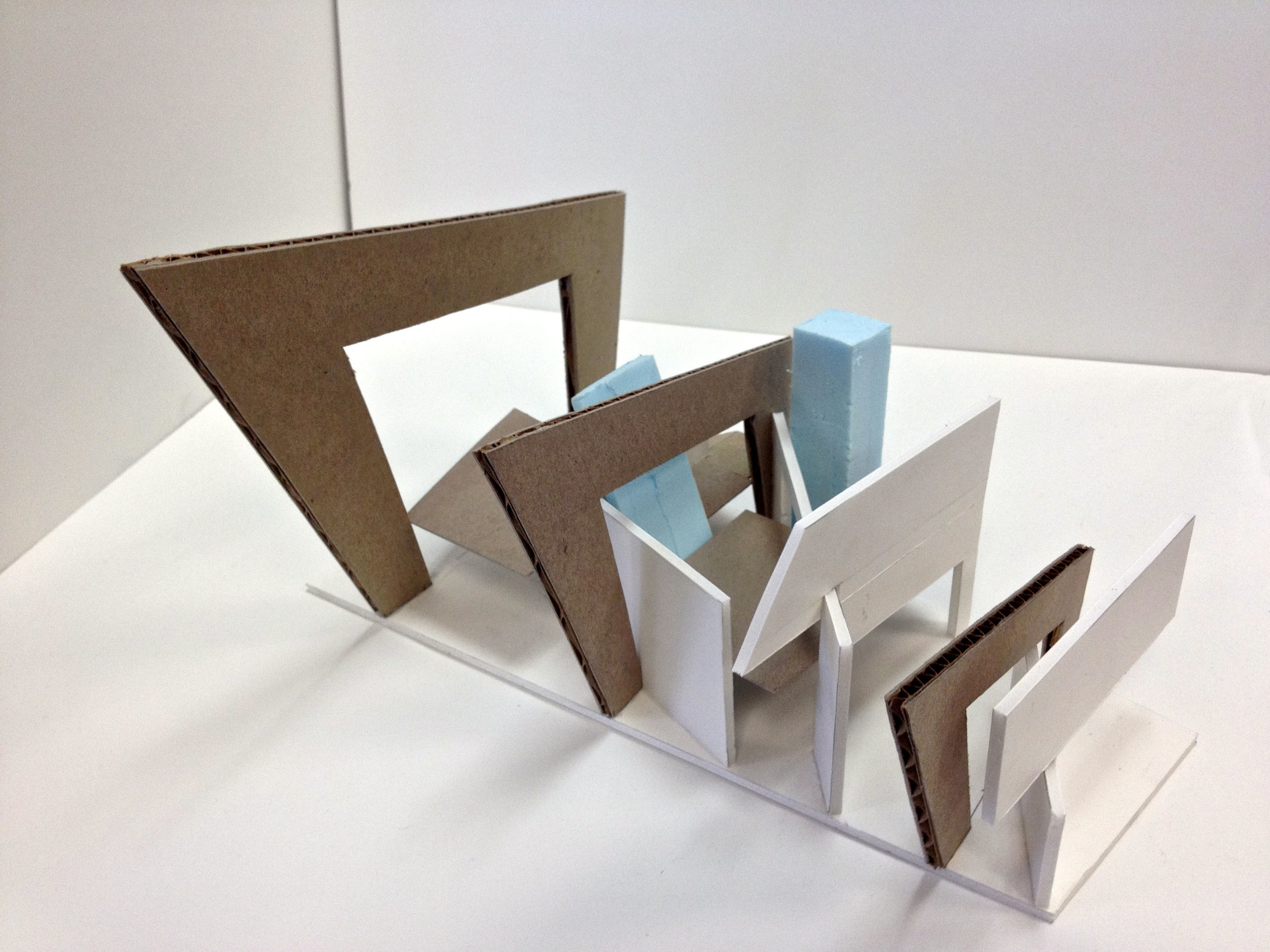


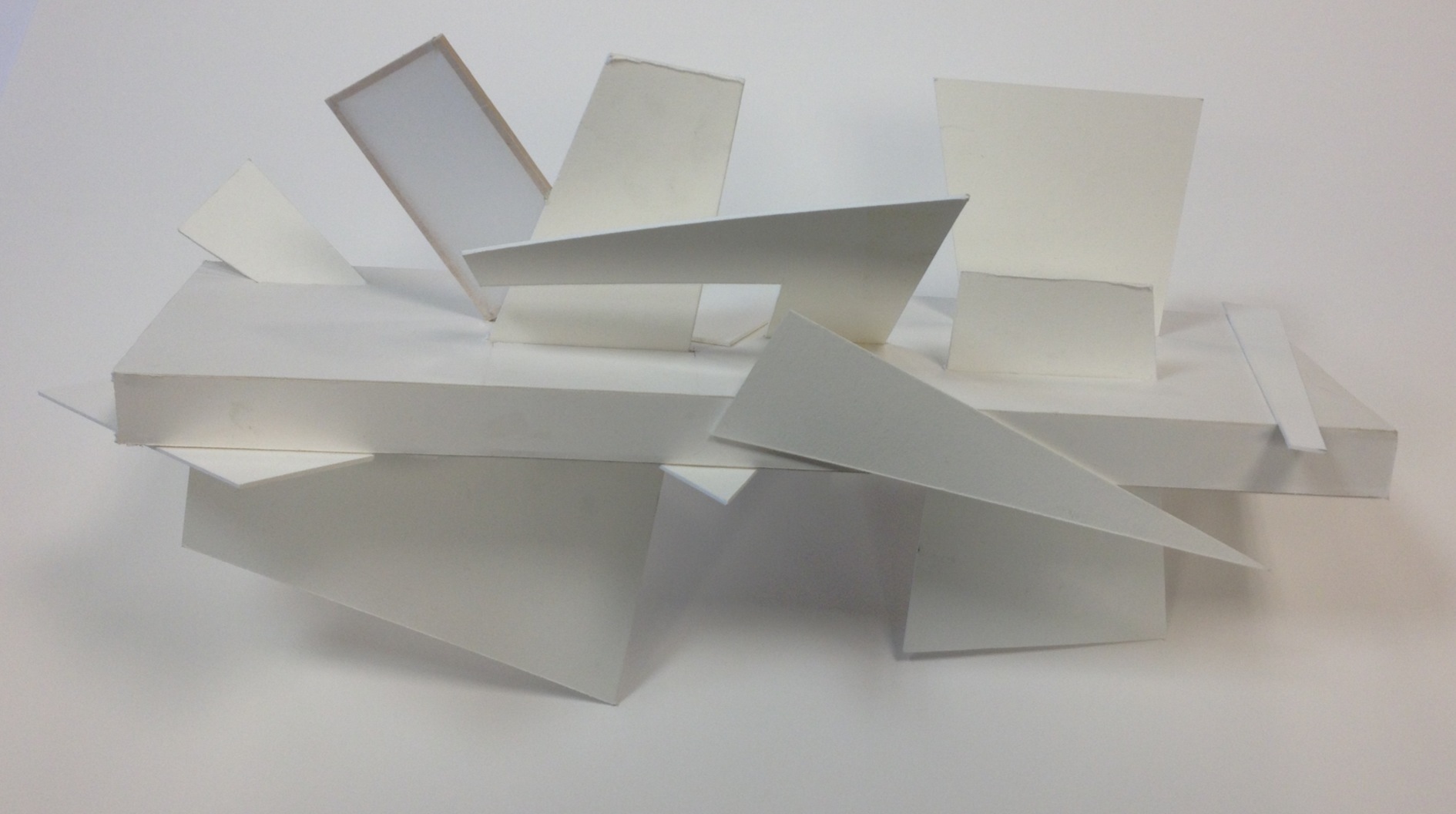
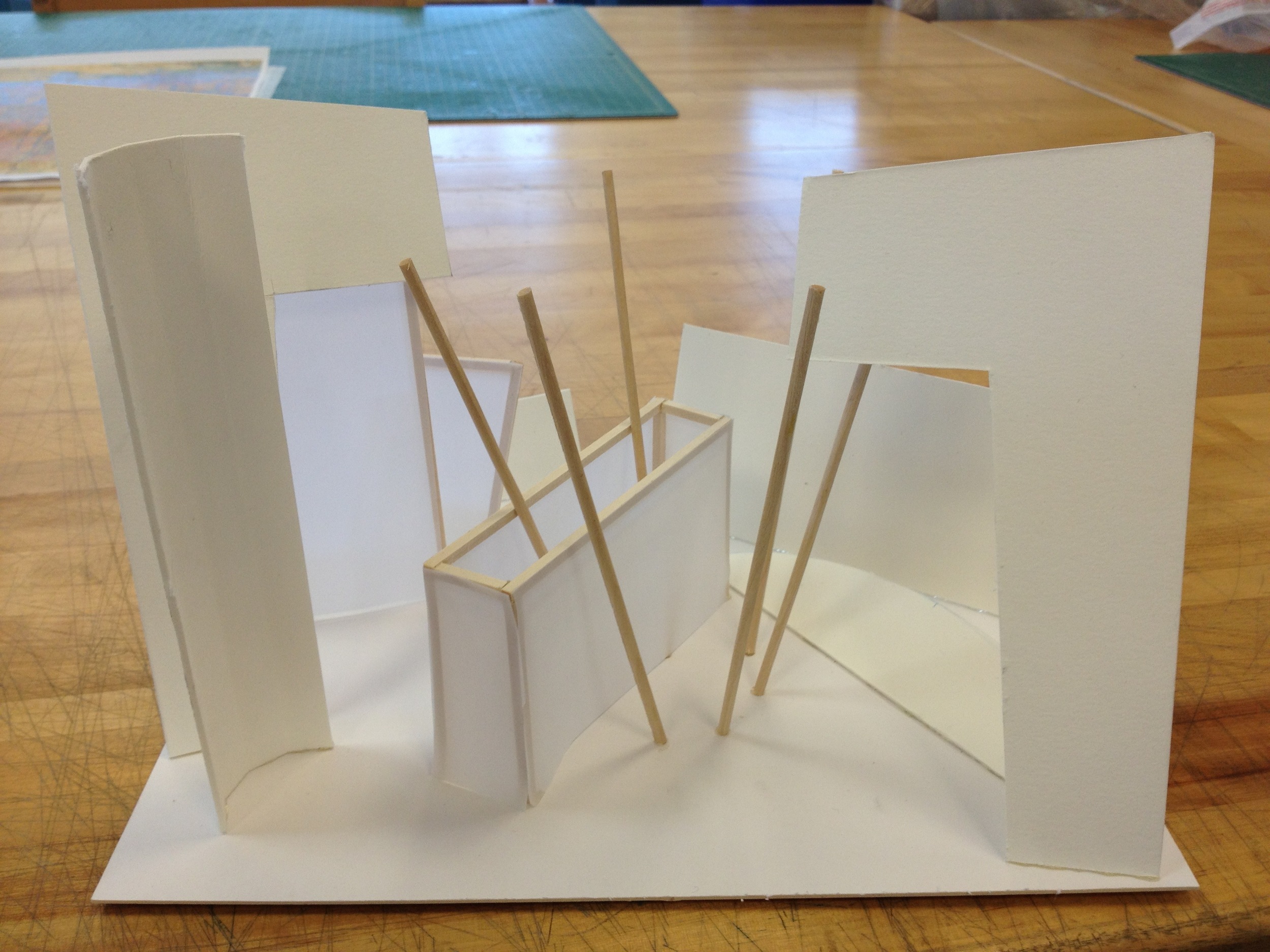
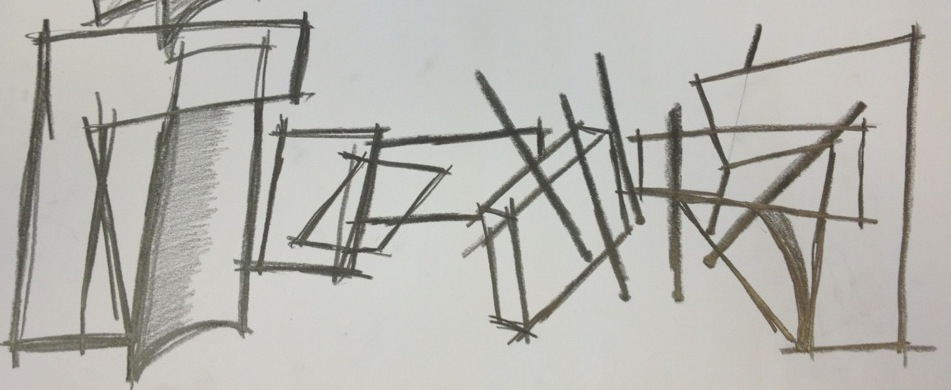
![photo[2] copy](http://static.squarespace.com/static/521118dde4b01a5565d6d275/52129998e4b0031894752801/5212999be4b00318947528ed/1347634638000/photo2-copy.jpg?format=original)
![photo[1]](http://static.squarespace.com/static/521118dde4b01a5565d6d275/52129998e4b0031894752801/5212999be4b00318947528ea/1347634411000/photo1.jpg?format=original)
